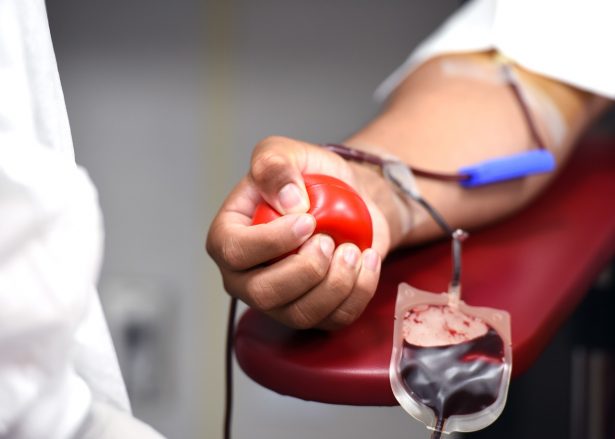Are men seen as generous or a bragger if they wear a branded bandage after donating blood?



By Michael Lam, Barbara Masser and Mel Hyde
Women outnumber men as blood donors in many countries, especially in younger age groups. In the United Kingdom, young men aged 17 to 34 years are two times less likely to donate blood compared to women of the same age. In Australia, men aged under 40 years make up only about 20% of whole blood donors, compared to 30% for female donors in this same age group.
Why could this be a problem? Compared to women, men are less likely to be deferred from donating blood for medical reasons and are less likely to have an adverse reaction when donating. In some countries, men are also allowed to donate more often than women to ensure the safety of the procedure for all donors. This means that while blood donor centres need women to donate, they also need more men to present to ‘roll up their sleeves’.
So just how can we encourage more men to donate? A systematic review by Lifeblood’s R&D Donor Behaviour team identified that in countries where donors are not paid to donate, the four most common factors that encouraged men to donate were perceived pressured by family or friends, viewing incentives (e.g., gifts, prize draws) positively, wanting the opportunity to have their health checked, and generally wanting to help others (i.e., altruism). However, the main take home from this review was how very little we know about how to encourage men to donate, particularly younger men, and those donating for the first and subsequent times.
In response to this knowledge gap, a number of researchers suggested using Costly Signalling Theory in marketing campaigns to encourage more men to donate. Costly Signalling Theory comes from evolutionary psychology and the basic idea is that certain behaviours can serve as a display of a person’s underlying traits (i.e., characteristics) that may be attractive to others. Think of a peacock fanning his tail to show the colours and eyespots for a female to judge his worthiness as a mate. According to this line of thinking, donating blood could serve as a signal of a blood donor’s otherwise unseen or unknown positive traits, such as their health or generosity. And the theory specifies that finding a way to subtly communicate such positive traits to others may be particularly motivating to men. However, as a costly behaviour donating blood has a pretty limited audience, with it only really seen by those present in the donor centre. But could a signal showing that someone has just donated blood – like a sticker or the routinely applied post-donation bandage – be enough to communicate to others that this person has desirable traits?
We conducted an experiment to see what types of traits people associate with someone who signals that they are a blood donor. We asked 242 people to rate a young male target on various traits, such as generosity, health, and self-promotion. People saw one of three versions of the same male target who wore either (1) no bandage, (2) a plain bandage, or (3) a blood donation branded bandage (images below). We reasoned that while a plain bandage may signal blood donation, it could also simply indicate that the person is injured. As such, we included a bandage that more clearly communicated the reason for why it was being worn – a bandage with a photoshopped blood drop on it.
Pictures of male target

We gained three key insights from the results of our experiment. You can read the full paper here
#1. Blood donation branded bandages signal generosity
On average, people thought that the man was more generous when he wore the blood branded bandage than when he wore either the plain bandage or no bandage. When we looked at whether this varied by the gender of the perceiver we saw that women saw the man wearing the branded bandage as most generous. But they also rated the man wearing the plain bandage as more generous than the target without a bandage. However, this was not the case for men who thought the target person was generous regardless of whether he wore any type of bandage or not.
#2. The reason for wearing a bandage needs to be obvious
Another trait that bandages signal is health status. Our target was rated healthiest when he didn’t wear a bandage. This finding highlights the importance of making the reason for wearing a bandage obvious. As a bandage can signal injury, if you want to tell people you are a blood donor then there needs to be a signal (e.g., a blood drop) on the bandage that clearly indicates you’re wearing it because you donated blood.
#3. Wearing a blood branded bandages is not seen as self-promotional
So clearly signalling that you donate blood brings good things, but knowing this could you be seen as bragging? Our results have good news for donors. The data shows that other people (i.e., observers) do not think that wearing the branded bandage is any more self-promotional than wearing a plain bandage or not wearing a bandage at all.
So, could branded bandages be a new way to encourage men to donate blood? We think it is a promising avenue. Most blood donors say they donate blood because it’s a good thing to do and they want to help others. However, without telling others they are a donor, no one will know. Our experiment shows that wearing a branded bandage is one way for donors to subtly signal to others their generosity in giving the gift of life.
